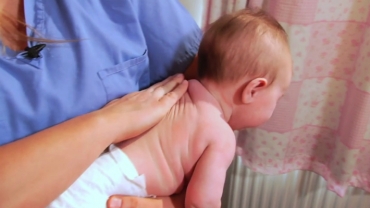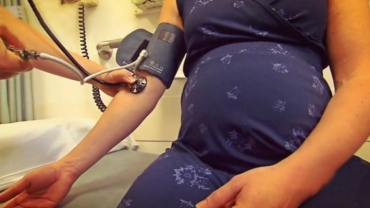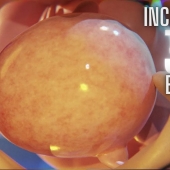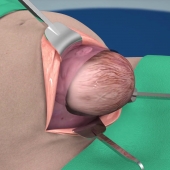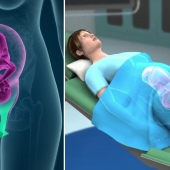During vacuum assisted vaginal delivery, the doctor or midwife will use a vacuum (also called a vacuum extractor) to help move the baby through the birth canal.
The vacuum uses a soft plastic cup that attaches to the baby's head with suction. The doctor or midwife uses a handle on the cup to move the baby through the birth canal.
When is Vacuum-assisted Delivery Needed?
Even after your cervix is fully dilated (open) and you have been pushing, you may need help getting the baby out. Reasons you may need help include:
- After pushing for several hours, the baby may no longer be moving down through the birth canal.
- You may be too tired to push any longer.
- The baby may be showing signs of distress and need to come out faster than you can push it out on your own.
- A medical problem may make it risky for you to push.
Before the vacuum can be used, your baby needs to be far enough down the birth canal. Your doctor will check you carefully to make sure it is safe to use the vacuum. This device is only safe to use when the baby is very close to being born. If the head is too high, a cesarean birth (C-section) will be recommended.
Most women will not need the vacuum to help them deliver. You may feel tired and tempted to ask for a little help. But if there is no true need for a vacuum-assisted delivery, it is safer for you and your baby to deliver on your own.
What Will Happen During a Vacuum-assisted Vaginal Delivery?
You will be given medicine to block pain. This may be an epidural block or a numbing medicine placed in the vagina.
The plastic cup will be placed on the baby's head. Then, during a contraction, you will be asked to push again. At the same time, the doctor or midwife will gently pull to help deliver your baby.
After the doctor or midwife delivers the baby's head, you will push the baby the rest of the way out. After delivery, you can hold your baby on your tummy if they are doing well.
If the vacuum does not help move your baby, you may need to have a C-section.
What are the Risks?
There are some risks with vacuum-assisted delivery, but it rarely causes lasting problems when properly used.
For the mother, tears in the vagina or on the perineum are more likely to occur with a vacuum-assisted birth compared to a vaginal birth that does not use the vacuum.
For the baby, the risks are mostly about bleeding:
- There may be bleeding under the baby's scalp. It will go away and does not cause serious problems. Your baby may be more likely to have jaundice (look a little yellow), which may be treated with light therapy.
- Another type of bleeding occurs underneath the covering of the skull bone. It will go away and does not cause serious problems.
- Bleeding inside the skull can be very serious, but it is rare.
- The baby may have a temporary “cap” on the back of its head after birth due to the suction cup used to deliver the baby. This is not due to bleeding and will resolve over a few days.




